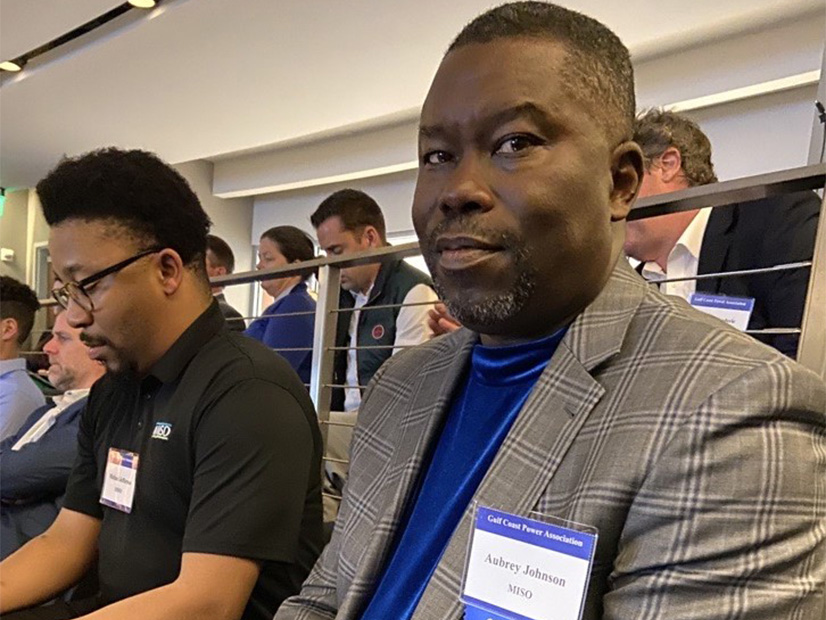NEW ORLEANS — MISO and SPP said Wednesday the Department of Energy has signaled that the grid operators and their state commissions can move forward with a full application for funding from the agency’s Grid Resilience and Innovation Partnerships (GRIP) program.
MISO Vice President of System Planning Aubrey Johnson said DOE urged the RTOs and their regulators March 3 to move forward in seeking funding for the $1 billion Joint Targeted Interconnection Queue (JTIQ) transmission projects.
“We were ‘strongly encouraged’ to bring a full application forward,” Johnson said during a panel at the Gulf Coast Power Association’s MISO/SPP Regional Conference.
MISO and SPP are collaborating on the DOE application that is led by the Minnesota Department of Commerce. The Great Plains Institute (GPI) is organizing stakeholders and coordinating the multistage GRIP application process. The organizations sent a concept letter to the DOE in mid-January that served as a preliminary application.
Matt Prorok, the Institute’s senior policy manager, said in an email that the organizations will begin working on a full application.
“We were excited to receive encouragement,” he said. “GPI, the Minnesota Department of Commerce, MISO, SPP and a number of other partners have been hard at work since January, and we look forward to submitting a full application in May.”
Full GRIP applications are due May 19. Approved projects could potentially be awarded a 50% project match. (See DOE Opens Applications for $6B in Grid Funding.)
David Kelley, SPP’s vice president of engineering, said as soon as the first JTIQ is approved and its process memorialized, the RTOs will begin analysis creating a “JTIQ 2.0” portfolio. He said the second effort will focus on the southern portion of the grid operators’ seam, where MISO South meets SPP’s Arkansas and Louisiana footprint.
MISO has said DOE funding will not affect its and SPP’s plan to lay out a 90%/10% cost allocation methodology for interconnecting generation and load, respectively, for the JTIQ projects. (See “DOE Funding for JTIQs Won’t Affect Cost Allocation,” MISO, SPP Update Stakeholders on Joint Tx Planning.)
The first JTIQ portfolio is expected to support 28.6 GW of new generation on either side of the seam.
Johnson said he and Kelley “bristle” when they hear stakeholders question whether generation developers will bring forward enough projects to fund the first collection of JTIQ facilities.
“We’ve got over 100 GW in their queue,” Johnson said, pointing to Kelley and referring to SPP’s generator interconnection queue. “And we’ve got more than 200 GW in our queue. … We think this is going to fill up rapidly.”
Kelley said once-obvious regional differences between grid operators are shrinking. He said all are experiencing renewable energy growth, baseload generation retirements, rising electrification and green hydrogen developments. “The pace of change is absolutely incredible,” he said.



